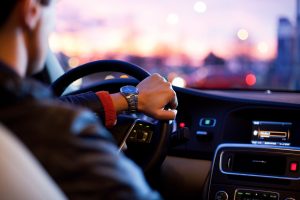Turning sixteen is an important milestone for most teenagers. However, when you’re a teenager with a Non-verbal learning disability, the excitement becomes a shameful embarrassment. As soon as I turned sixteen, my parents were quick to enroll me into driver’s education. I mean, that’s what most teenagers are expected to do right ? Initially, I was excited as maybe this would finally be my chance to “be like the rest of my friends.” The fireworks and excitement quickly drifted away after my first in-car lesson.

Image by Free-Photos from Pixabay
I knew how to drive straight, but ask me to turn the wheel or park the car and it quickly became a disaster. By the end of the session, the instructor asked if I needed to write “left” and “right” on my hands. He wasn’t joking either. It was evident my brain wasn’t processing all the different tasks and instructions involved with driving. At the time, I didn’t think having NVLD would impact learning how to drive. I tried and persisted, but no matter how many lessons of both Drivers Ed and time driving with my parents I became too frustrated and gave up.
As I grew older, and as I started learning more about NVLD I put together the pieces of my very unique brain. Whenever I get in the car with my boyfriend, and a car merges into our lane I quickly freak out and yell “Watch! That car’s going to hit us!” Luckily, we’ve been together long enough that he understands what NVLD entails so he laughs it off and assures me we’re fine.
Having NVLD gives you poor visual-spatial skills, which means I see things differently than neurotypicals. Usually that means, I see cars closer than they are. I’m sure with enough practice and a more genuine driving instructor who understands NVLD, I could drive one day. I haven’t given up on the thought entirely. As with other tasks associated with NVLD, I’ve learned patience and extra time is needed to process new tasks.
Driving has often been a heated topic of discussion between my family members and friends. When they ask me why I don’t drive, explaining NVLD becomes too exhausting or they may see it as “an excuse.” Instead, I usually resort to “I’m an anxious driver.” Some people perceive the world differently, and that’s just part of the many wonders associated with NVLD and who I am.
Megan
I’m a graduate of the Child & Youth Worker program from Cambrian College and I’m pursuing my degree in Disability Studies at Ryerson University along with a certificate in Aboriginal Knowledges & Experiences. I am a Project Social Ambassador for The NVLD Project.







